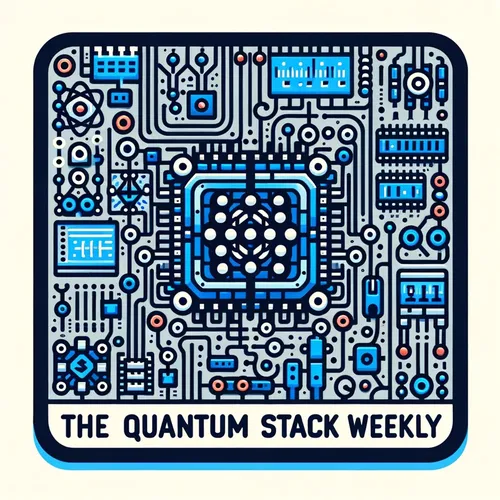Quantum Leap: IonQ and ORNL Optimize Power Grids with Hybrid AI
- Author
- Quiet. Please
- Published
- Fri 01 Aug 2025
- Episode Link
- https://www.spreaker.com/episode/quantum-leap-ionq-and-ornl-optimize-power-grids-with-hybrid-ai--67217226
This is your The Quantum Stack Weekly podcast.
Yesterday’s power grid might look static to most, but to me, it crackles with quantum potential—every node, every generator, a variable in a dance more complex than the shimmer of a superposed qubit. This is Leo, your Learning Enhanced Operator, and today on The Quantum Stack Weekly, I’m taking you inside a genuine leap for both quantum computing and real-world impact: the recent partnership between IonQ and Oak Ridge National Lab to optimize the power grid using quantum technology.
Let’s jump in. Just hours ago, researchers from IonQ and ORNL revealed that they’d harnessed the IonQ Forte, a 36-qubit trapped-ion quantum computer, in a hybrid configuration alongside classical systems, to crack what’s called the “unit commitment” problem. Simply put: they figured out how to optimally schedule 26 power generators across a single day—a logistical feat that would make any grid operator sweat. But add quantum—now you’re playing in a probabilistic symphony, orchestrated not just by classical logic, but by amplitude and phase.
Why does this matter? Current classical algorithms bog down as you scale; they’re fast for a handful of variables but choke on combinatorial explosion. Even the most advanced supercomputers struggle as grids grow ever more complex—especially with renewables and shifting demand patterns. Enter hybrid quantum-classical algorithms: classical processors handle the heavy data prep, while the quantum chip executes those subroutines notorious for blowing up time and memory on digital CPUs. The two exchange feedback in real time, each iteration finding subtler, faster ways to allocate resources, minimize costs, and keep the lights on.
Niccolo de Masi, IonQ’s CEO, called this “a significant milestone”—and he’s not overstating it. While 36 qubits doesn’t sound astronomical, the architecture matters. Trapped ions give us long coherence times, fine-tuned control—like the difference between a violin and a bar room fiddle. But let’s be clear: this is a scaled-down scenario. The real magic will come as we march toward thousands, even millions of qubits, where the grid’s real-world chaos and constraints can be mapped, solved, and optimized far beyond what’s classically possible.
To a quantum thinker, this hybrid approach echoes how nature itself achieves efficiency—a kind of collaboration between relentless classical certainty and the serene ambiguity of quantum mechanics. Every generator schedule, superposed. Every possibility, measured, then collapsed into the optimal path—no longer brute-forced, but elegantly found.
Reflecting on grid resilience—especially as heatwaves and blackouts dominate headlines—today’s announcement isn’t just a technical achievement; it’s quantum stepping into tomorrow’s infrastructure. The algorithms pioneered here could slice peak demand, slash emissions, and usher in a smarter, more adaptive grid.
Thank you for joining me for this electrifying deep dive. If you ever have questions—or burning topics you want unraveled on-air—email me anytime at [email protected]. Don’t forget to subscribe to The Quantum Stack Weekly, and remember, this has been a Quiet Please Production. For more, visit quiet please dot AI.
For more http://www.quietplease.ai
Get the best deals https://amzn.to/3ODvOta
